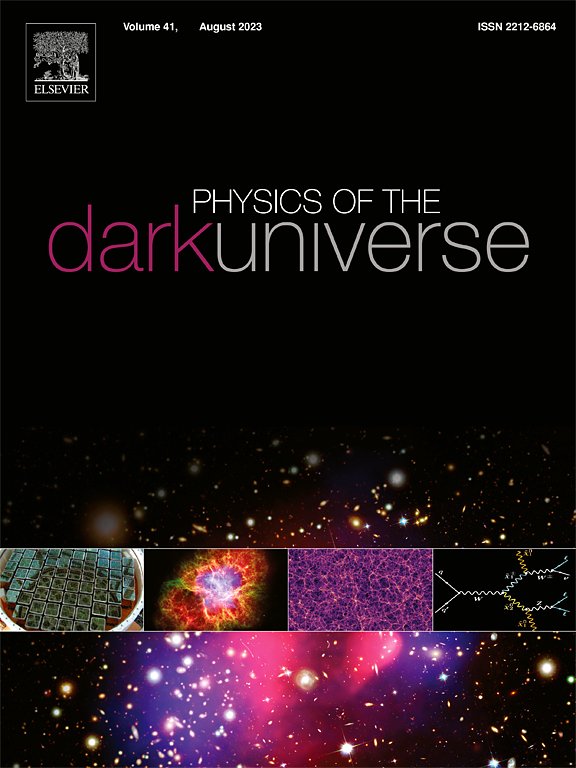原始黑洞主导的引力波:膨胀衰减率的影响
IF 6.4
2区 物理与天体物理
Q1 ASTRONOMY & ASTROPHYSICS
引用次数: 0
摘要
在这项工作中,我们探讨了在暴胀场主导的暴胀后预热阶段,原始黑洞(PBH)的形成情景。我们特别考虑高斯峰值暴胀功率谱的模型独立参数化,该参数化导致暴胀结束前的暴胀密度波动放大。这些模式可以在预热期间重新进入视界,并且可能经历触发PBH产生的不稳定性。这是用考虑了非球面效应的Khlopov-Polnarev (KP)形式估计的。在KP的形式下,导出了质量分数的精确解析表达式,该表达式与数值计算很好地吻合。我们特别关注质量为MPBH<;109g的超轻PBH,研究它们在暴胀场衰变为辐射后和PBH通过霍金辐射蒸发前的演化和(可能的)优势。这些考虑改变了先前对诱导引力波(GWs)的估计,并为未来的探测器探测随机GW背景设定了新的目标,前提是这些探测器能够显著提高实验灵敏度,因为目前计划的仪器还没有足够的探测灵敏度。本文章由计算机程序翻译,如有差异,请以英文原文为准。
Gravitational waves from primordial black hole dominance: The effect of inflaton decay rate
In this work, we explore primordial black holes (PBH) formation scenario during the post-inflationary preheating stage dominated by the inflaton field. We consider, in particular, a model-independent parametrization of the Gaussian peak inflationary power spectrum that leads to amplified inflationary density fluctuations before the end of inflation. These modes can reenter the horizon during preheating and could experience instabilities that trigger the production of PBH. This is estimated with the Khlopov–Polnarev (KP) formalism that takes into account non-spherical effects. We derive an accurate analytical expression for the mass fraction under the KP formalism that fits well with the numerical evaluation. Particularly, we focus on ultra-light PBH of masses g and study their evolution and (possible) dominance after the decay of the inflation field into radiation and before the PBH evaporation via Hawking radiation. These considerations alter the previous estimates of induced gravitational waves (GWs) from PBH dominance and set new targets for detecting stochastic GW backgrounds with future detectors, provided that these achieve significantly enhanced experimental sensitivity, as current planned instruments do not yet possess sufficient sensitivity for detection.
求助全文
通过发布文献求助,成功后即可免费获取论文全文。
去求助
来源期刊

Physics of the Dark Universe
ASTRONOMY & ASTROPHYSICS-
CiteScore
9.60
自引率
7.30%
发文量
118
审稿时长
61 days
期刊介绍:
Physics of the Dark Universe is an innovative online-only journal that offers rapid publication of peer-reviewed, original research articles considered of high scientific impact.
The journal is focused on the understanding of Dark Matter, Dark Energy, Early Universe, gravitational waves and neutrinos, covering all theoretical, experimental and phenomenological aspects.
 求助内容:
求助内容: 应助结果提醒方式:
应助结果提醒方式:


